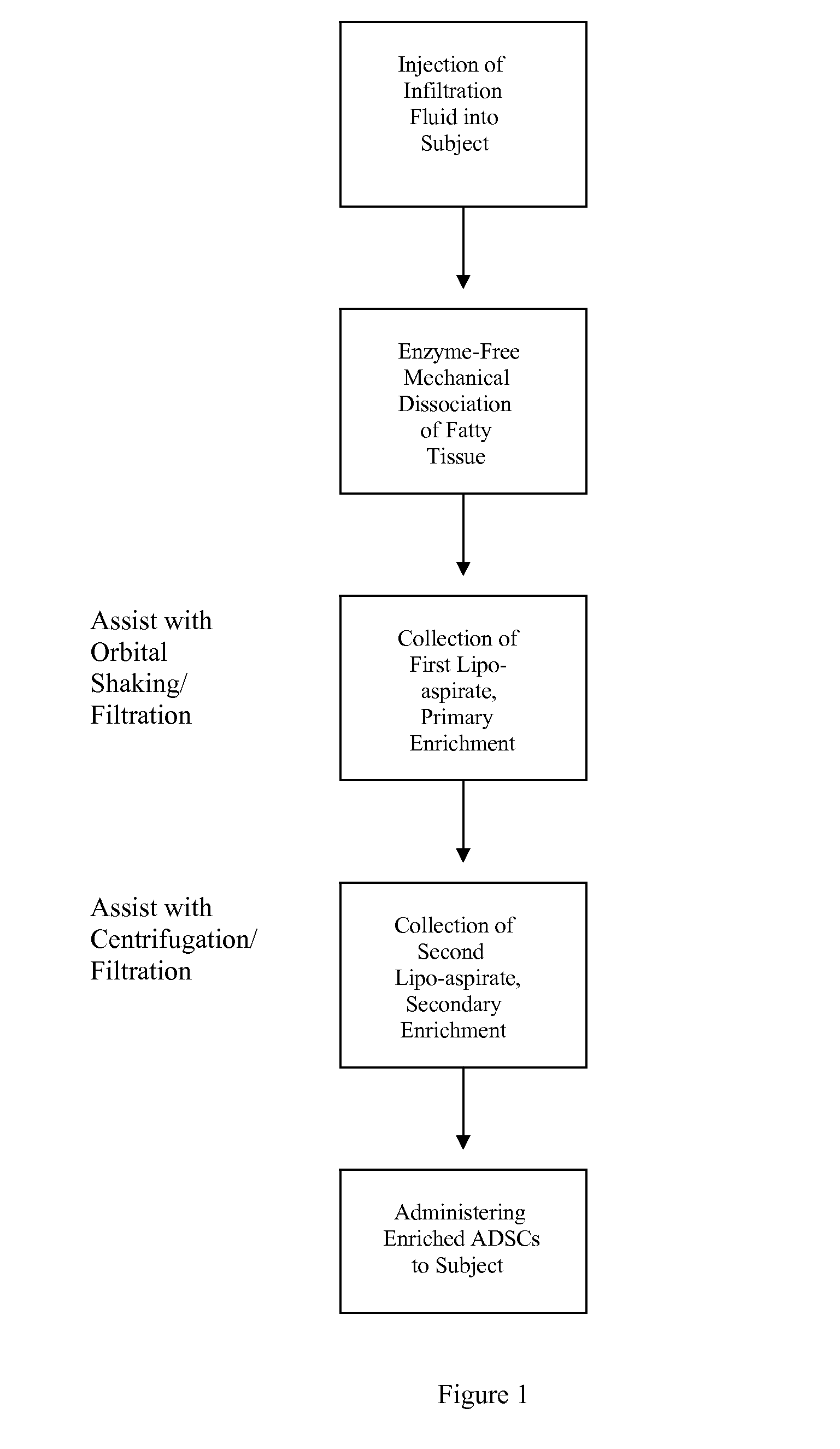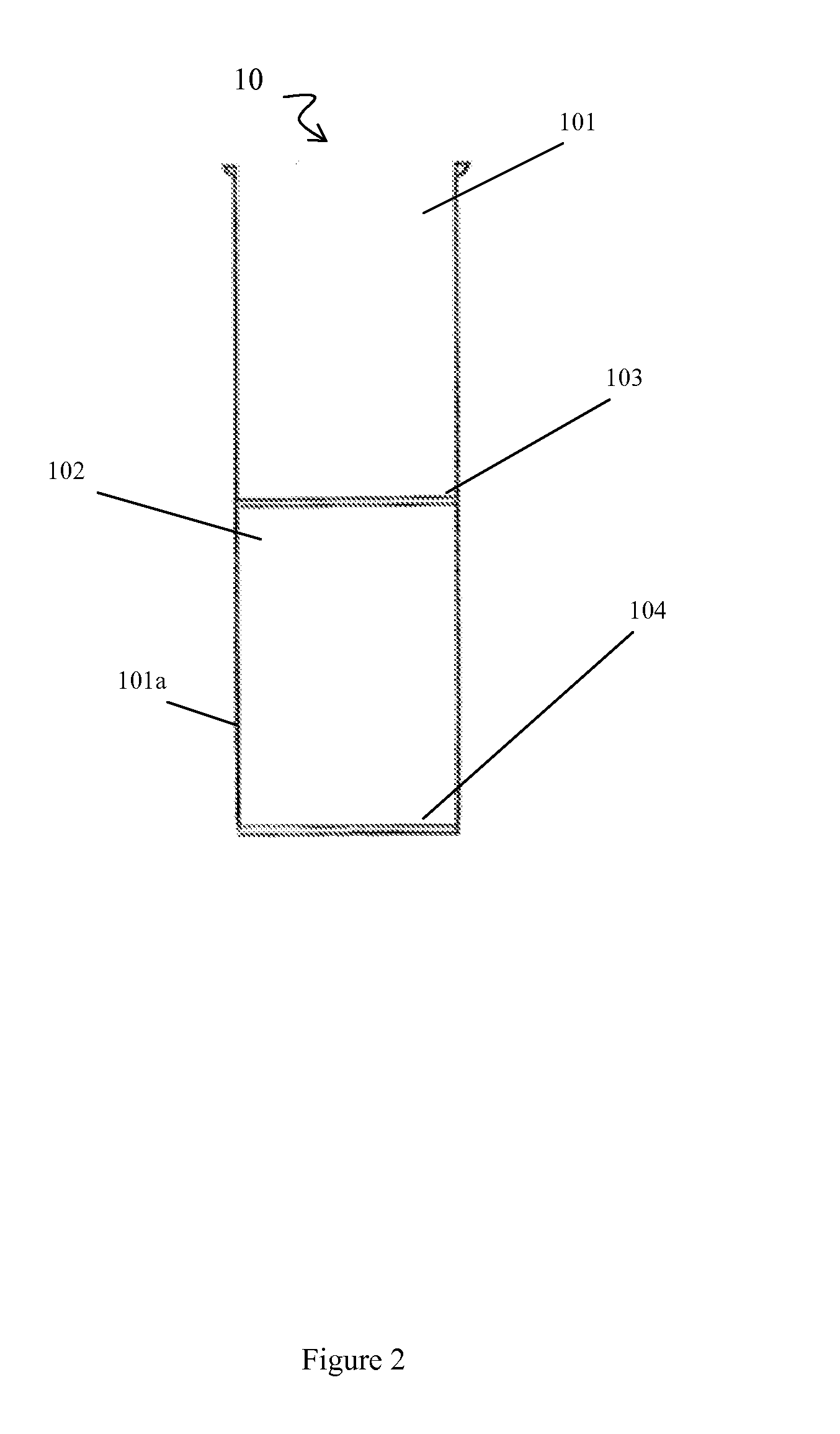Non-Enzymatic Method for Harvesting Adipose-Derived Stromal Cells and Adipose-Derived Stem Cells from Fat and Lipo-Aspirate
a stromal cell and fat-derived technology, applied in the field of non-enzymatic methods for harvesting fat-derived stem cells and adipose-derived stem cells from lipo-aspirate, can solve the problems of low frequency of ascs in these tissues, affecting the immune system of recipients, and unable to recognize new biological materials
- Summary
- Abstract
- Description
- Claims
- Application Information
AI Technical Summary
Benefits of technology
Problems solved by technology
Method used
Image
Examples
examples
Identification of ADSC Cells in Physiological Infiltration Fluid
[0108]Briefly, prior to liposuction, the subject's subcutaneous fat is infiltrated with a physiological infiltration fluid (PIF). To optimize fat cell dissociation, for every 1 cc of fat planned for liposuction, 3-5 cc of the physiological solution is used for infiltration. This ratio of PIF enhances the process of physical dissociation of fat from ADSCs. The amount of fat liposuctioned depends on the number of ADSCs needed or the volume of fat needed for lipo-augmentation. The latter can vary from 5 to 15 cc of fat for the face to 600 to 1000 cc needed for buttock lipo-augmentation. Thus, the volume of physiological infiltration fluid (PIF) used will depend on the area selected. Next, during liposuction, about 300 to 2500 cc of lipoaspirate was suctioned using a 3 mm liposuction cannula.
Separation of ADSCs from Fat Globules
[0109]During liposuction, the lipo-aspirate (containing fat globules, ADSC cells, PIF, blood cell...
PUM
| Property | Measurement | Unit |
|---|---|---|
| Pore size | aaaaa | aaaaa |
| Pore size | aaaaa | aaaaa |
| Diameter | aaaaa | aaaaa |
Abstract
Description
Claims
Application Information
 Login to View More
Login to View More - R&D
- Intellectual Property
- Life Sciences
- Materials
- Tech Scout
- Unparalleled Data Quality
- Higher Quality Content
- 60% Fewer Hallucinations
Browse by: Latest US Patents, China's latest patents, Technical Efficacy Thesaurus, Application Domain, Technology Topic, Popular Technical Reports.
© 2025 PatSnap. All rights reserved.Legal|Privacy policy|Modern Slavery Act Transparency Statement|Sitemap|About US| Contact US: help@patsnap.com



